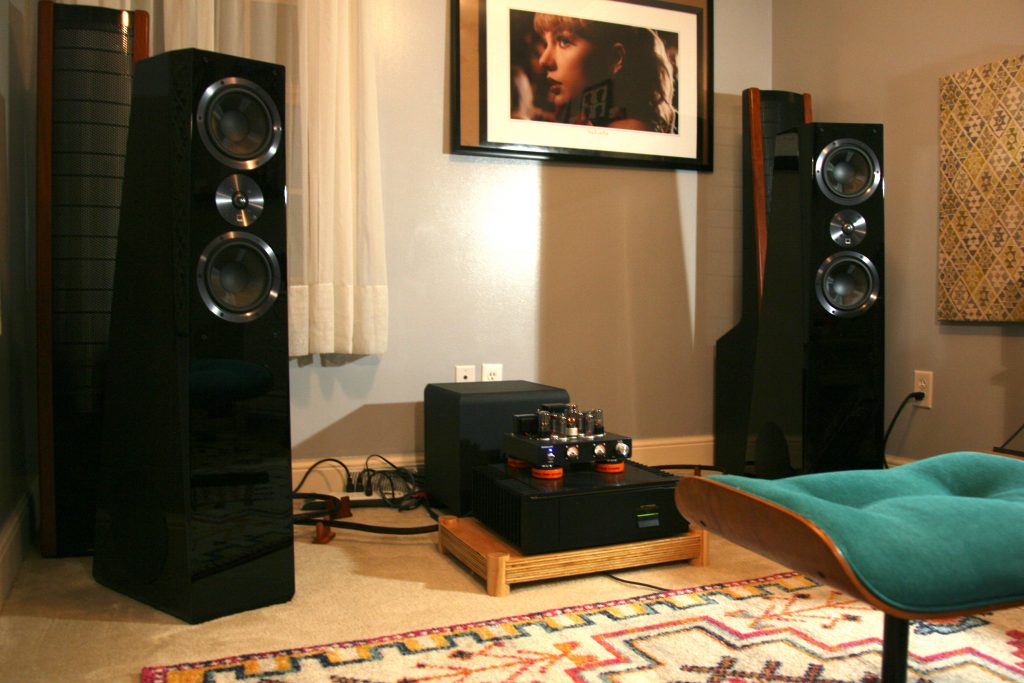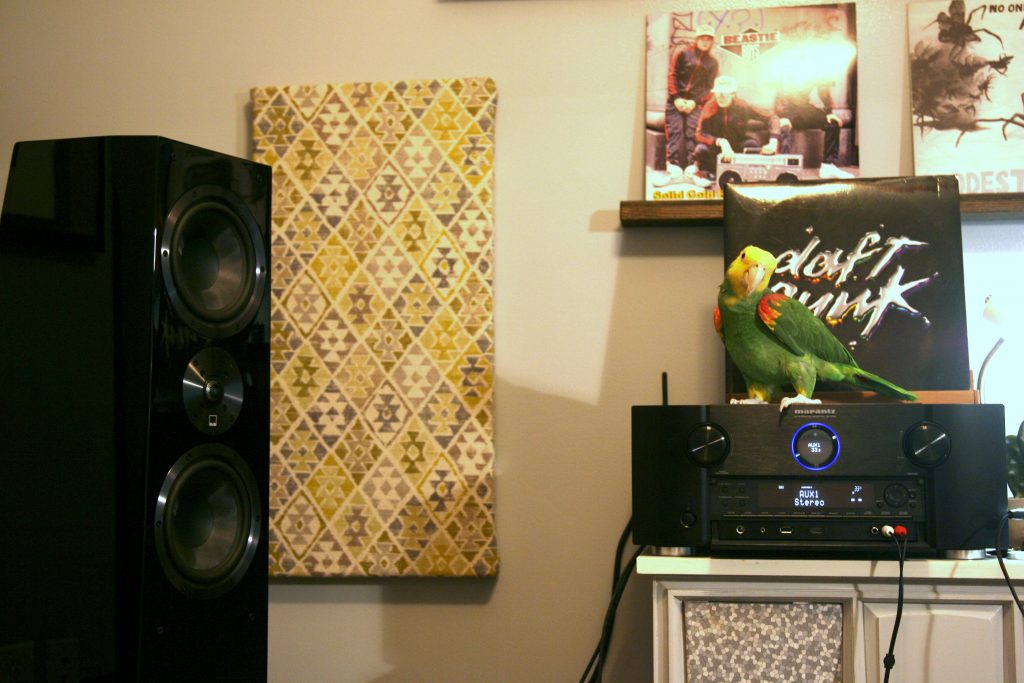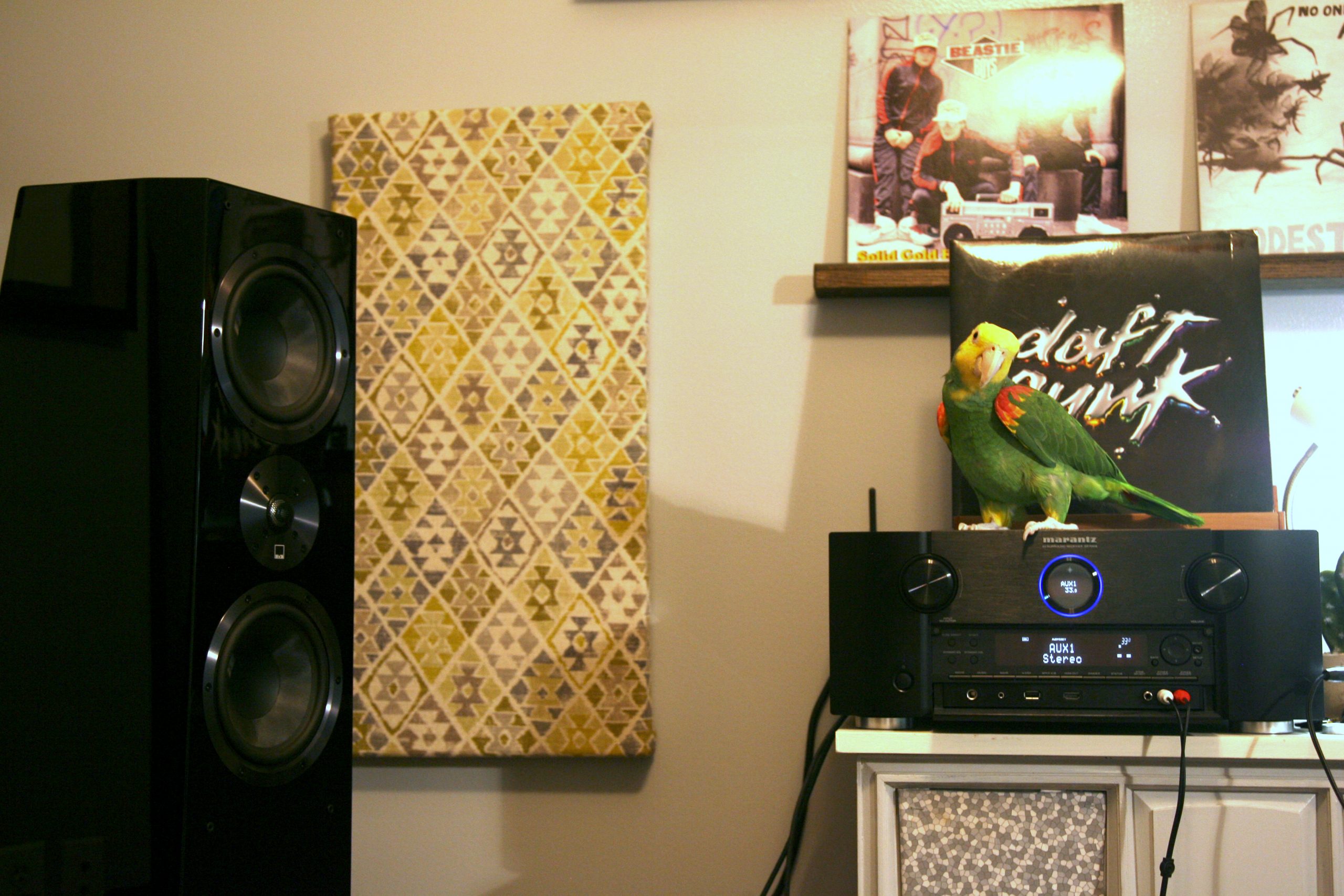The SVS Ultra towers, SVS’s flagship model is back for part 2 of their review. This time we have them in the 2.1 channel system to see how they stack up against others. The SVS Ultra towers retail for $999.00 each in the U.S. which is not a lot of money for a flagship model when we compare it to other companies. There are a lot of people that will equate price to the quality or the lack of cost in some cases. Do the ultra towers sound like 2000 bucks or more, or less? There is a lifetime of discussion that can go into why some speakers cost 500 dollars and some 500,000 dollars and if they are worth it, let’s not get on a tangent too soon. Instead, let’s take a dive into the Ultra Towers and see if they are right for you.

Ultra Tower Sound
We touched on the sound in the theater review, here if you’re interested. Let’s talk about the performance with music, which is different than movies. Most of us tend to look for different characteristics for a theater and a music system when we are able to have dedicated systems at least. Accurate imaging is so important in a 2 channel system, you don’t have physical speakers around you immersing you in the sound. Personally, I don’t care for surround sound music, I like it in front of me, like at a concert. The Ultra Towers do a good job at imaging, the blend of sound from left to right is great, you can close your eyes and “see” instruments in various locations. Where the sound falls a little short for me is the sound stage, they lack depth. Width and height are not lacking though. I think I may have a bias though, I listen to electrostatic speakers (Martin Logan Aerious I) normally which have this spacious 3D sound stage that is hard to beat with traditional drivers. The stage isn’t completely flat, just not a deep as some other options. Let’s have a more fair comparison, they are better in imaging and soundstage than the Prime Towers. With larger drivers and different cabinet shape, they perform better in every field of comparison. I appreciate it when a company doesn’t just pack more or bigger drivers in a cabinet and call it a better model. The Ultra Towers have very little in common with their smaller brothers. They also have much different driver placement, you get subs angled outward at the bottom, as well as a mid above the tweeter, which contributes to the wide and tall soundstage you get. That tweeter is, by the way, at ear level on my sectional as well as my Eames chair.

As I mentioned in the first part of this review, the Ultra Towers have a full rich sound. Something to note, they deserve and want power, the richness was even more present when I connected them to my dedicated power amp. They have warmth as well as detail. They are not the most detailed speakers, but more than acceptable. The bass and mids are so present and really have a great presence in the room. High frequencies from the tweeters are not lacking in that presence, they add the nuance and detail you want with a balance that is well done. SVS’s in my experience have not been overly bright speakers, such as Martin Logan or many B&W speakers, just something to keep in mind depending on what you like. Many people find bright speakers fatiguing, personally, I don’t and prefer it to a degree. When I was younger and didn’t have the greatest systems I was guilty of scooping the mids on my tone controls. Now I still prefer that brightness of the high end, but love quality and full mid-range.
Starting from the bottom up, the Ultra Tower speakers feature a proprietary SVS ForceFactor woofer array with two 8-inch drivers horizontally opposed at the base of the speaker for room-filling low-frequency output. Because of the unique shape of the cabinet, each of the woofers fires in a different direction resulting in deep, effortless and accurate bass throughout the listening area.
SVS Sound Revolution
Specs:
Frequency Response / Acoustic Data:
- Rated bandwidth: 28 Hz-32 kHz (+/-3 dB).
- Nominal impedance: 8 ohms.
- Sensitivity: 88 dB (2.83V @ 1 meter full-space, 300-3kHz).
- Recommended amplifier power: 20-300 watts.
Speaker Specs:
- Floor Standing Tower Loudspeaker
- Real black oak veneer and piano gloss black finish options
- Dual gold-plated 5-way binding posts
- 3.5″ wide-flared rear-firing port
- Cloth grille with pin/cup retention system
- Elastomer screw-in feet – adjustable for level
- Spiked metal screw-in feet included – adjustable for level
- Cabinet Dimensions: 45.6” (H) x 13.8” (W) x 16.5” (D) (without grille)
- Overall Dimensions: 45.6” (H) x 13.8” (W) x 16.8” (D) (with grille)
- Shipped Dimensions: 50.3″ (H) X 21.3″ (W) X 22.3″ (D)
- Weight Unboxed: 75.4 pounds
- Shipped Weight: 86 pounds
Driver Specs:
1” Aluminum Dome Tweeter:
- FEA-optimized diffuser for airy and unveiled presentation
- Aluminum dome delivers exceptional transient response and exceptional stiffness/mass ratio
6.5” Midrange Drivers:
- Composite glass-fiber cone with excellent stiffness/mass ratio for high sensitivity and pistonic behavior beyond pass band
- Aluminum shorting ring to reduce gap inductance, lower distortion, and enhance high frequency response
- Cast aluminum basket to ensure precise alignment of critical components and additional heat-sinking capacity
- Vented voice coil former to minimize air compression artifacts at high drive levels
8” Woofers:
- Aluminum shorting rings to reduce gap inductance and lower distortion
- Long stroke motor and suspension for high output
- Vented voice coil formers to minimize air compression artifacts at high drive levels
Crossover & Cabinet Specs:
Crossover:
- 3.5-way crossover with premium-grade capacitors, air-core inductors and heavy-trace printed circuit boards
- Unique tapered midrange array miniimizes off-axis lobing and enhances radiated sound power into listening space
- Top midrange-to-tweeter crossover: 2 kHz
- Bottom midrange taper frequency: 700 Hz
- Dual midrange-to-woofer crossover: 160 Hz
Cabinet:
- Separate sealed midrange enclosures minimize top-to-bottom wall dimensions and shift standing waves beyond the driver pass band, minimizing negative driver interaction and associated frequency response degradation
- Non-parallel cabinet panels reduces axial standing waves within the cabinet, reducing frequency response coloration
- Acoustically transparent and FEA optimized grilles, wedge-shaped front baffle and flush-mounted drivers all contribute to reduced edge diffraction and improved on-axis high frequency response
- FEA-optimized bracing, 1″ thick midrange/tweeter baffles and 1.5″ thick woofer baffles eliminates structural resonances and ensures the cabinet remains acoustically inert for uncolored response even at the highest drive levels

Conclusion
SVS did a great job designing and building the Ultra Tower. It is a beautiful speaker in sound and looks. I would say this is probably my favorite speaker in this price range. You can confidently use it in a theater, two-channel music system, or a combo system. I think it is the ultimate dual use speaker for 2000 dollars a pair. Looking at the price point of 2000 dollars you have competition such as Monitor Audio Silver 200’s, the very entry-level Martin Logan 20i, and Bower’s and Wilkins 806. There are others as well, however, none of them offer the low end of dual 8in subs, as well as two mid-range drivers. Ultra Tower’s don’t need the addition of a powered sub like the Motion line up from Martin Logan does. I will say they sound good with a sub, but nearly as much as a requirement. I think the SVS has a sound more akin to higher-priced and larger floorstanding speakers. SVS’s whole line up really offers great value and quality. If you are looking to build a theater these need to be on your audition list, as well if you want an all-in-one audio room. For music specific rooms I think there are better options for not much more money but the Ultra Towers still deserve a listen.
For pros and cons, I will say the same thing as Part 1 as it doesn’t really change for the 2.1 channel setup.
What they Do Well
- Neutral Sound, perfect for movies and games
- Detailed
- Great imaging
- fantastic appearance
What they could work on
- powering the subs would make a great all in one tower
- offering other modern finishes
- very large footprint
Tested with the following:
- Marantz SR7009
- Nakamichi PA5 Stasis
- Klipsch KSW-10 Subwoofer
- Audio-technica LP7, with Ortofon 2M Bronze
- FiiO M9
- Audioquest evergreen interconnects
- DIY 10g Speaker Cables









Disclaimer:
SVS provided Hifi Chicken with Ultra Towers for Review, this review was not paid in part or full by SVS or any affiliate.


Great cabinet, fair speaker drivers from Peerless, terrible crossover components and interior wiring of aluminum, ferrous connectors. No soundstage, good for loud movies but not to use for any form of sound stage, 2d symphonic from the 1970s best recordings which have detail is not heard nor the locations. No nuances regardless of front end and amplification. Benz Micro RubyZ, Technics Grand Class, Marantz 11 series separates, preamp and amp, nordost red dawn cables top to speakers. Magnepan 3.6r vastly superior and they have their own problems but are able to recreate a reasonable 3d soundstage and hear the space between instruments side to side and front to back of older recording of live classical, jazz, blue grass and the a capella groups and quality rock recordings before going to digital.
The cabinet is a good place to start to make your own triamp system with quality components or update the existing and active x-over at 160-180. Update all passive xover garbage which is extremely cheep in this system that are slow pennies caps and 1-2 dollar iron core inductors with small gage wire and replace aluminum hookup wire with copper.